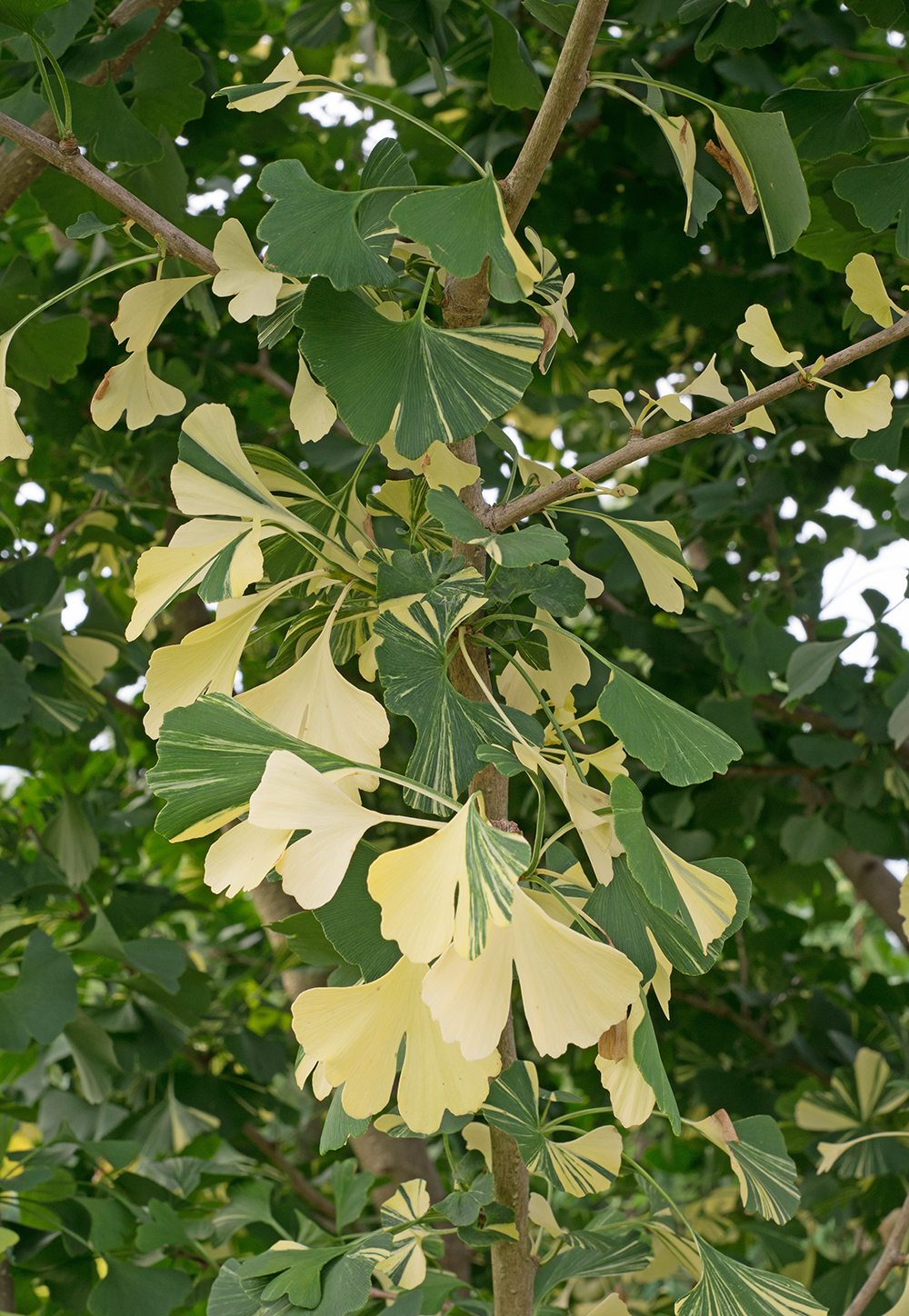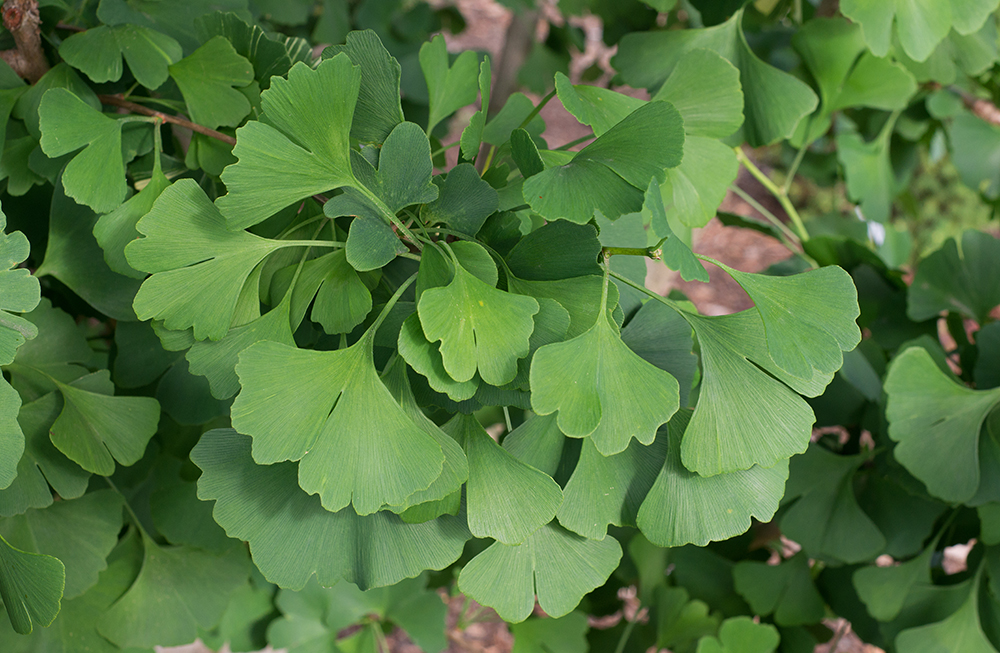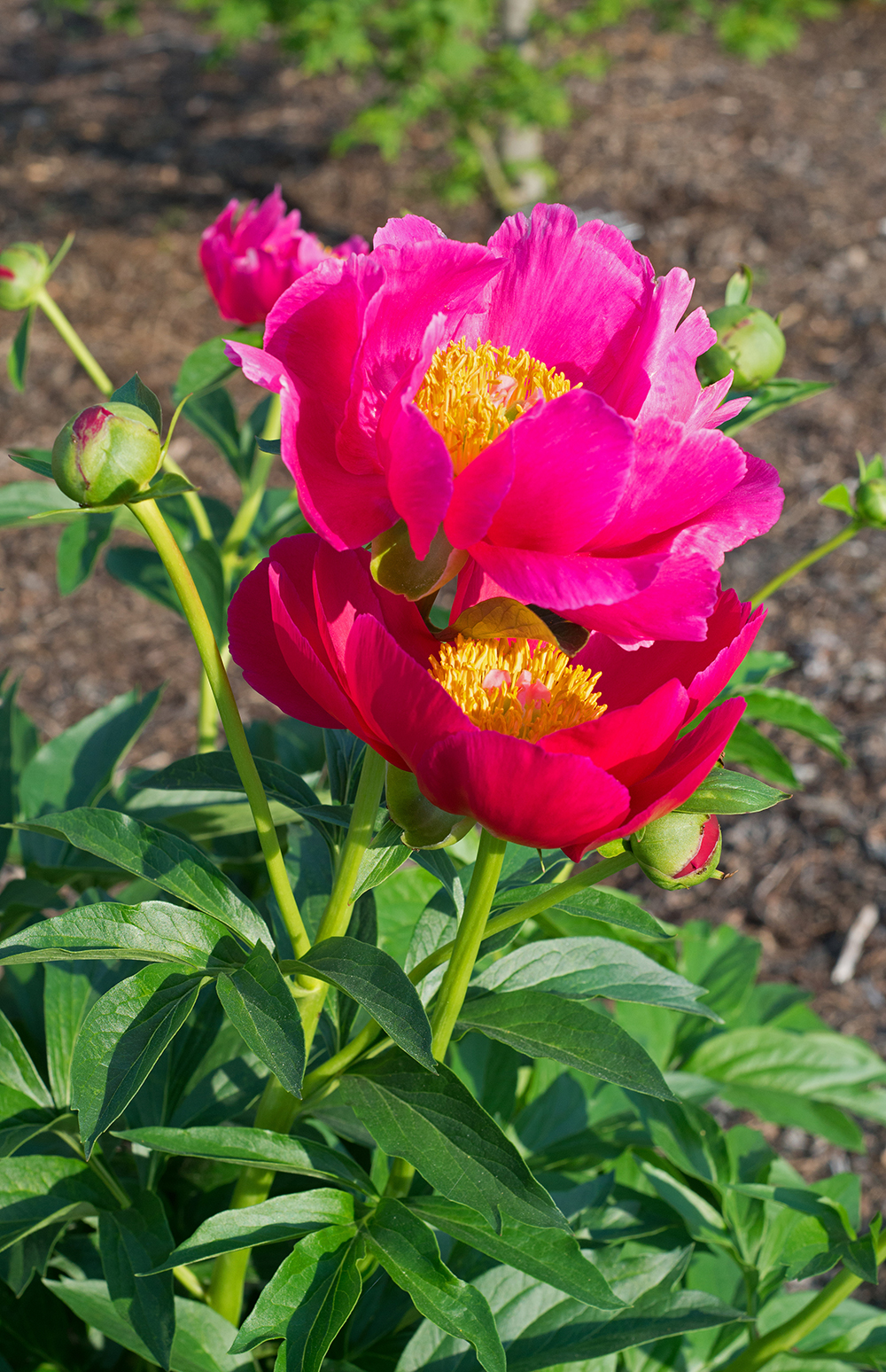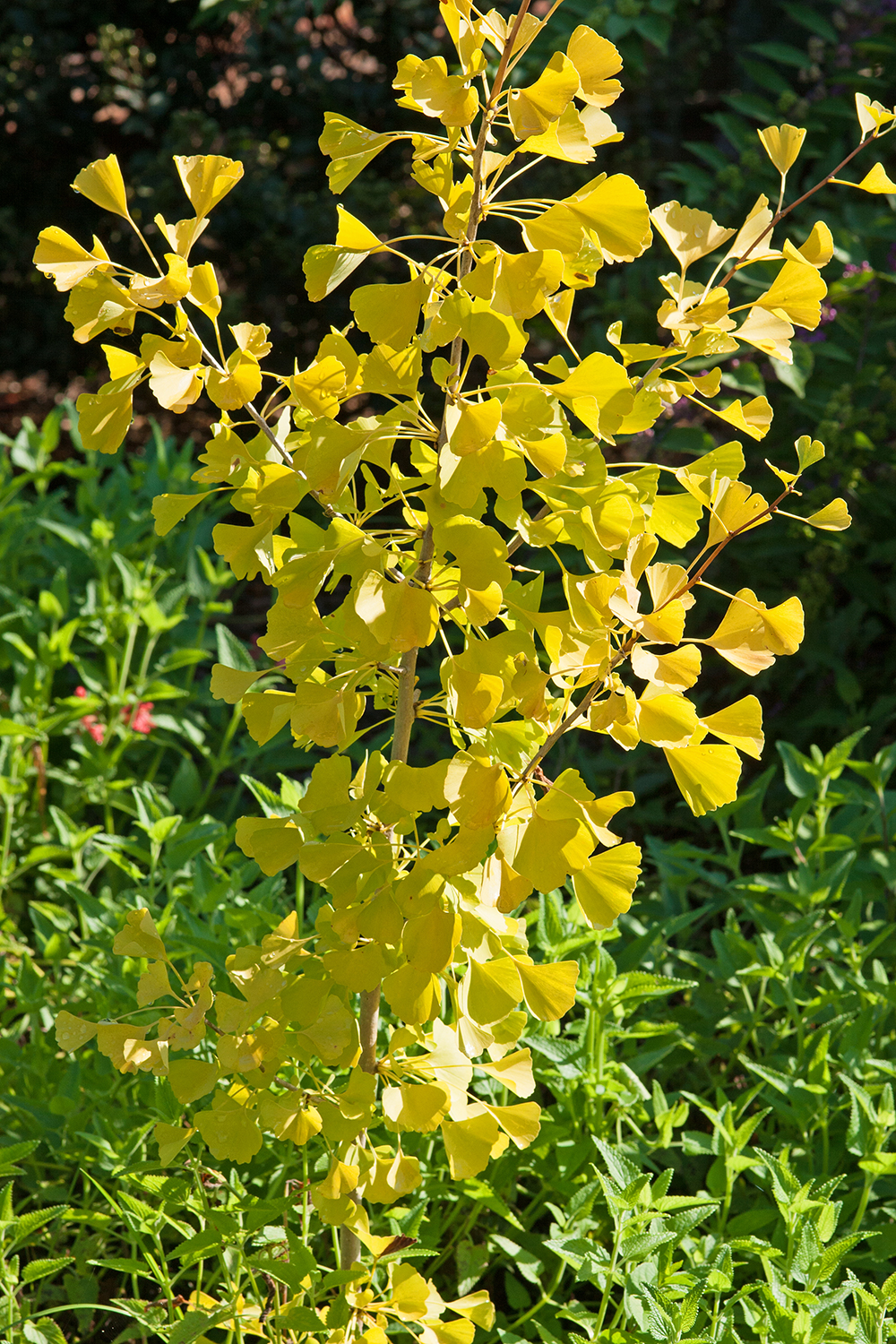Autumn is the perfect time to plant woody ornamentals, and if you are looking for a real conversation piece, grab a ginkgo tree (Ginkgo biloba). What’s so special about ginkgo? For starters, it is very old — set your time machine back to 200 million years ago, and you will find ginkgo in full flaunt. Also, with apologies to Charles Darwin, it forgot to evolve and has remained relatively the same over the eons. Call ginkgo a living fossil, if you will.
So, the ginkgo is ancient — now add otherworldly. During the spring and summer, a typical ginkgo exhibits the same green-ness of many other shrubs and trees, which, from a distance, appears rather ho-hum. But closer inspection reveals weird, fan-shaped leaves that look like they would fit perfectly in an Avatar sequel.
Ginkgo got your attention yet?

Ginkgo white lightning

Ginkgo leaves
Ginkgo trees are tough, too. I’ve seen them doing quite well on local mall parking lot berms and traffic islands in full sun, so in a pampered backyard, they will certainly thrive.

Peony Scarlett O’Hara
September is the month for buying and planting peony tubers. At the store, pick out the chubbiest tubers you can find that have at least four to five pinkish “eyes” on each. In the garden, don’t plant them too deep — no more than an inch below the soil’s surface. This close encounter will allow the tucked-away tubers to experience the beneficial chill of winter, which they need to develop — and bloom — properly. Also, if possible, site your peonies-to-be in an area that greets the morning sun, but is somewhat shaded from the harshest afternoon rays during the growing season.
A species ginkgo will stretch to more than 60 feet tall with a 35-footplus spread, so give it room. As an alternative, consider a dwarf ginkgo. There are many mini-cultivars available, with examples being ‘Thelma,’ which tops out at around 10 feet, ‘Troll’ (4-5 feet), and the uber-short ‘Mariken’ (2-3 feet).
If you fancy more flash, variegated ginkgo trees are also available. I have enjoyed a ‘White Lightning’ with its leaves scratched by pale yellow for several years. It is another shorty, only stretching to about 12 feet high.
Ginkgo trees are dioecious, meaning there are female and male trees. Many new cultivars are ginkgo guys, and this is on purpose. Female ginkgo trees produce nuts, which, after falling to the ground, begin to smell worse than nasty. So, unless you enjoy stink, skip female ginkgo selections.
Ginkgo trees won’t be found at every garden center, but it is still worth asking the staff if they can order a particular cultivar. Online shopping is always an option, and MrMaple Nursery (mrmaple.com) in East Flat Rock, NC, offers a large ginkgo selection.
Finally, an additional ginkgo plus: In the fall, when colder temperatures arrive, its foliage will turn a handsome yellow. This show will linger but a few days, and then, almost in unison, all the leaves desert their branches, forming a carpet of chilled gold under a bare tree. Quite a sight — one worth talking about.
To Do in the Garden
September
- Resist the urge to prune perennials and woodies at this time of year because such shearing now will encourage new growth in the early fall that probably won’t have time to harden off before the first frosts bite.
- It’s a busy time in the veggie garden because broccoli, arugula, Chinese cabbage, cauliflower, Swiss chard, dill, kale, lettuce, mustard greens, onions, parsley, turnips, spinach, and radishes can all be planted now.
- Before cold weather moves in, parsley, thyme, oregano, basil, mint, and chives, six easy-to-grow — as well as transplant — edibles can be dug up from the garden and placed in pots on sunny window sills for a small indoor herb garden.
- Patrol the rose bed — watch for any signs of black spot and snip off infected leaves. Since this is a soil-borne disease that can overwinter in the garden, also rake up and dispose of fallen flowers and foliage.
October
- If you are still mowing your yard when autumn leaves start to drop, think about bagging the results. This combination of dry fallen foliage and fresh grass clippings makes an excellent starter for a compost pile.
- Tomatoes that are still green on the vine can be harvested before the first frosts bite and brought inside to ripen. Wrap each fruit lightly in a piece of tissue paper and place in an area out of direct sunlight. Check on the tomatoes weekly and use them as they turn red.
- If you are an impatient gardener, pick some of your green tomatoes and enjoy an ol’ kitchen tradition by looking up online any of the many recipes for fried green tomatoes.
- Thinking about hanging onto your Halloween pumpkin for Thanksgiving festivities? Carved jack-o’-lanterns won’t last long, of course, but whole pumpkins will store nicely in a dry, cool place out of direct sunlight. If you spot any mold on the rind, it can be wiped off with a cloth lightly dipped in vegetable oil.
- Local Faces of Fashion
- The Hidden World of Raleigh Speakeasies
- Spooktacular Sights and Sounds
- On the House
- Down the Road: Sylvan Heights Bird Park
- Out & About in Wake County: September / October 2022
- Small Business Spotlight: ShopSpace
- Pay it Forward: Designed for Joy Lifts Women in Crisis
- Celebrated Spirits: Macaluso
- Celebrated Spirits: Fraise Juice from Compass Rose Brewing
- Garden Adventurer: Conversation Piece: The Ginkgo Tree








